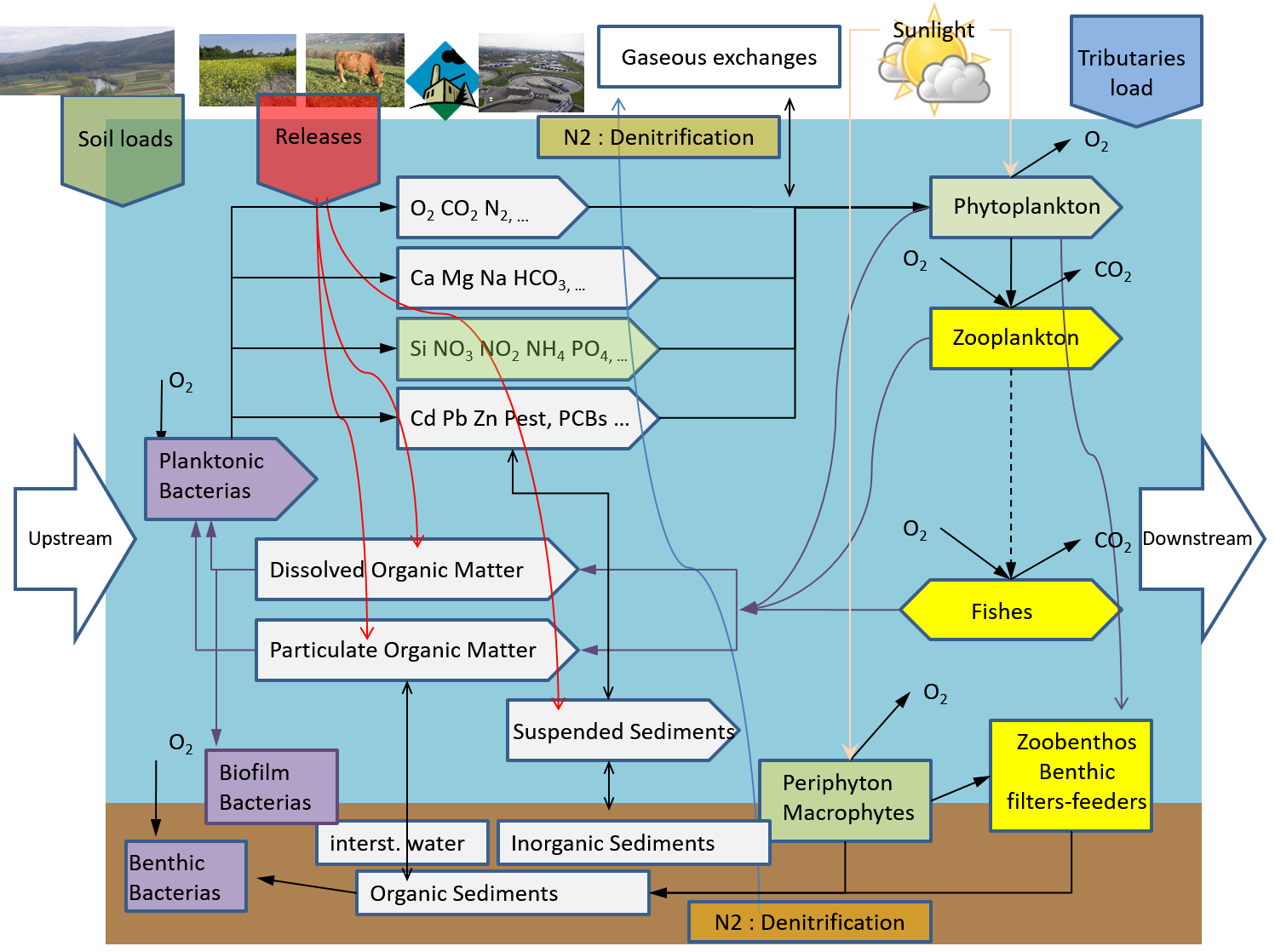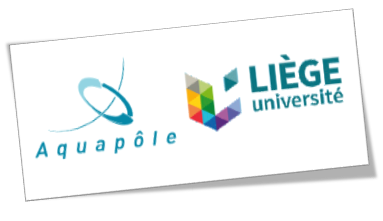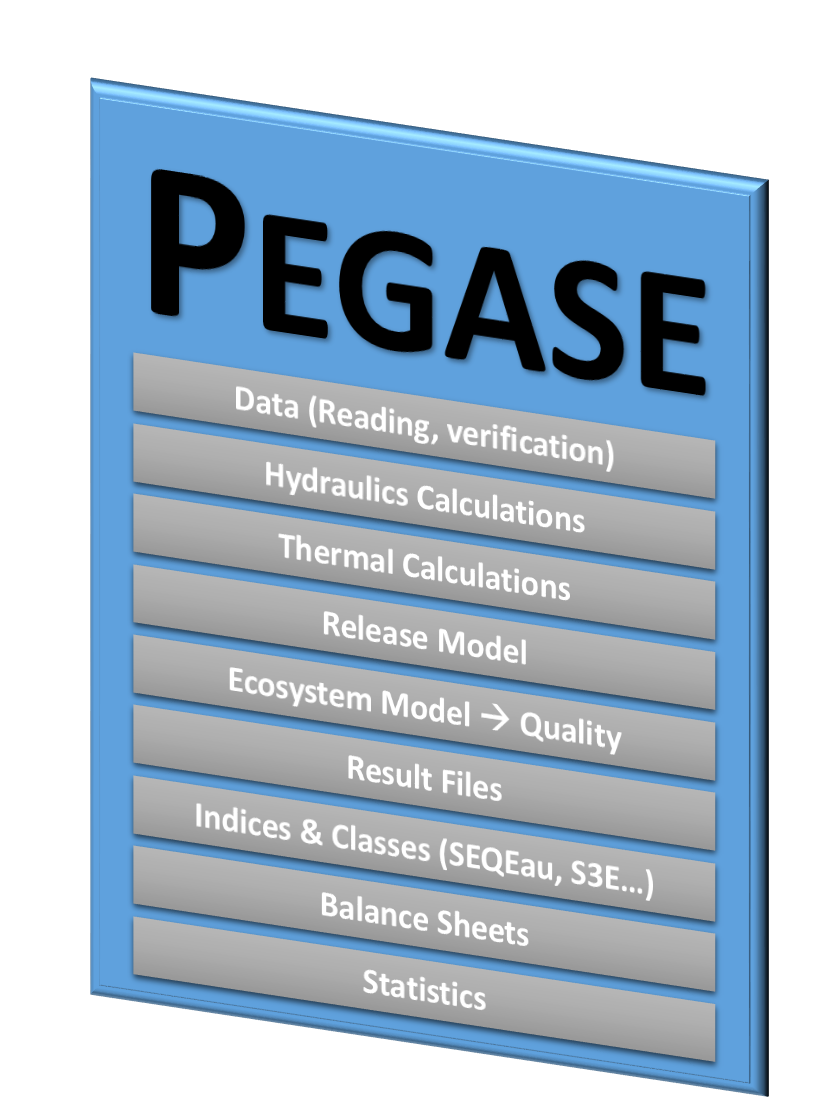|
Structure of Pegase Introduction Pegase is an integrated model watershed/River dedicated to calculating in a deterministic way the river water quality according to releases and pollution load, for various hydrological situations, in steady-state or non-stationnary mode over years. It also provides provisional calculation of measures foreseen to enhance water quality (waste water treatment, release reduction…) before their actual implementation.
Pegase can proceess several thousands of rivers simultaneously and the watershed processed can reach several tens of thousands of km2. Pegase can also process fine simulations on a subset of the whole watershed (e.g. a single river with a watershed of a few km2). Pegase belongs to a new generation of models, which implement a detailed representation of system dynamics, particularly the explicit calculation of the evolution of various biomasses. Furthermore, the structure of te Pegase model is su!ch that most of the parameters have a physical, chemical or biological meaning (e.g. maximal growth rate) and can be calibrated separately using well targeted experiments results. One of the advantages is that Pegase can therefore be used wityh few modification and calibration for various hydrological situations and various hydrographic networks. Structuration of the model Considering the process to represent, Pegase is structured as a series of 5 submodels implementing the following features:
Processes modelled Amongst the main processes anfeatures included in the Pegase model, we find:

Use of the model Pegase can be used in 2 modes:
The use of the model has been facilitated in the recentyears, by the addition of a dedicated GUI, realised in the frame of the program "Pegase Opera" (to make the Pegase model more operational) with the support of Pegaseusers, and resulting in the software suite PegOpera. |
||||
|
Aquapole Quartier Polytech 1 Allée de la découverte, 11 4000 Liège BELGIQUE Access Map Google Map |
About the site
|
Rejoignez-nous :
|

|




